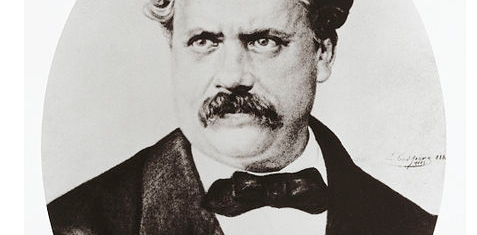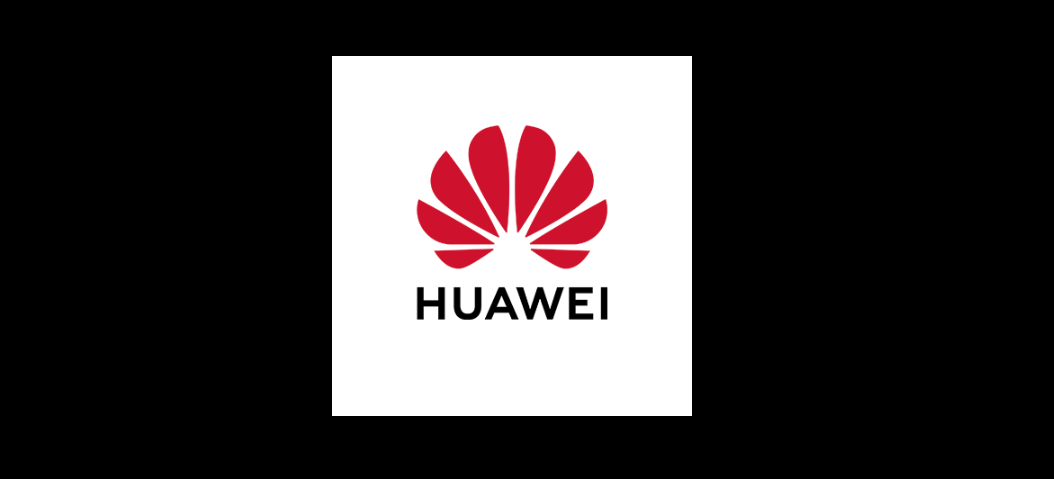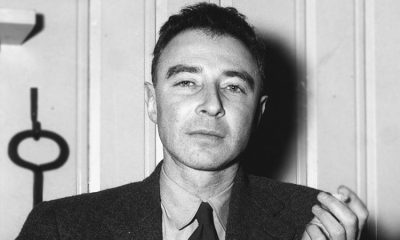Companies
Mark Zuckerberg

Mark Zuckerberg biography
Mark Zuckerberg (May 14, 1984) programmer and entrepreneur, creator of Facebook. His birth name is Mark Elliot Zuckerberg. He was born in White Plains, United States. His father, Edward Zuckerberg, served as a dentist, and his mother, Karen Kempner, was a psychiatrist. Most of his life was raised in a small village in Westchester County Dobbs: Ferry, New York. His family raised him under the Jewish religion, he had his Bar Mitzvah at 13 years old. Studied at Ardsley High School, Zuckerberg was an outstanding student.
His parents saw that the young man needed a higher quality education, so they took him to Phillips Exeter Academy, an exclusive private school in New Hampshire, where thanks to his good performance and love of numbers he won prizes in mathematics, astronomy, physics, and classical studies. One of the things he enjoyed most was attending the Johns Hopkins Center for Talented Youth summer camp, this was a key place where Zuckerberg could give free rein to his imagination, curiosity, and wit. Zuckerberg could read and write French, Hebrew, Latin, and ancient Greek.
Another of his hobbies was training to fence and he was the team leader. At the age of 18, he undertook a computer project with a friend named Adam D’Angelo, former technical head of Facebook, the project was called Synapse Media Player. The program was very successful because it had the purpose of reproducing music, as well as providing certain tools such as preference, and previous selections, which made it easier for the user to navigate it.
When they began to see the popularity of the program and the good results, important software companies such as Microsoft or Apple, sought to acquire the rights, but finally, nothing came of it. Mark independently decided to upload his application to the network, so that users can download it for free. Zuckerberg had the support of several outstanding engineers of the University of Harvard, some of the personages who helped him were Eduardo Saverin, Dustin Moskovitz, and Chris Hughes.
The first was the coordinator of computer science, the others were his roommates. In 2002 he entered Harvard University. Two years later, with the help of some colleagues, he launched a new website: the social network Facebook. One of the most famous social networks worldwide today. We must mention that Facebook emerged with the initial intention of creating a connection network among students at Harvard University. The name of the website was inspired by a newsletter that many universities give their new students to meet with other students within the campus.
Mark took as a priority that Facebook allowed to add friends, with whom you could exchange photos and messages, create groups of friends. Each user had a “wall” to allow friends to write messages. Then several modifications were made to the website. In a short time, Facebook went viral and very popular among university students. In just two weeks, two-thirds of Harvard students had registered on Facebook, and in just a few months several students from other universities created their user. After a while, Mark Zuckerberg took the opportunity to move to Palo Alto, California, with the intention of founding his first office.
The young man had to leave the university because Facebook needed his full attention. This idea soon reached companies and colleges. In the face of success, the programmer decided to expand its services to the general public. In 2006 Facebook had become a worldwide phenomenon, only in countries such as Canada, the United Kingdom, and the United States, it had about 64 million users. This is also because Facebook was only available in English. For 2008 Facebook diversified and hosted several languages, including French, German and Spanish. After that, its popularity and users grew as foam.
In 2007 Forbes magazine published the ranking of the 25 most influential people on the Internet. Zuckerberg, as chief executive of the site, clearly made part of the list. One of his biggest achievements was selling 256 percent of the 1.6 percent portal to Microsoft for 256 million euros. In 2008 Zuckerberg made part of the 1,125 richest men in the world according to Forbes. And also one of the youngest wealthy. His offices in 2008 already occupied four buildings and had about 400 employees. Both Viacom and Yahoo! were interested in buying shares on Facebook.
His higher income came from his contract with Microsoft on advertising. One of his great competitions, in the beginning, was MySpace, a property of News Corp, the empire of Rupert Murdoch. But Facebook quickly grew three times faster than its rival. But after being at this point of fame and important, Researchers from their colleagues who initially collaborated in the creation of Facebook decided to take legal action stating that Zuckerberg had “seized the idea.”
The creator of Facebook has great philanthropic inclinations. He joined the campaign The Giving Pledge, an initiative commanded by billionaires Bill Gates and Warren Buffett that seeks that the great magnates donate half of their fortunes to philanthropic causes.
Time magazine mentioned him as the character of the year, and Hollywood took the opportunity to launch a biopic about a 26-year-old character: The Social Network (2010), based on the book by Ben Mezrich Billionaires by accident under the direction of David Fincher. In 2012 Mark Zuckerberg married Priscilla Chan. In 2015, Max was born, the couple’s first child. Currently, he appears in the list of billionaires of Forbes magazine, with a fortune valued at US $ 63.3 billion, ranking number five among the richest in the world.

Companies
Spotify

Spotify History
Spotify is a multiplatform application of Swedish origin created in the mid-first decade of 2000 by web designer and entrepreneur Daniel Ek. It began its history as an application for computers in 2008 and a year later presented the mobile and dynamic version for smartphones. After signing a contract with numerous record labels such as Sony BMG, Hollywood Records, Warner Music, and Universal Music, among others, Spotify launched into the conquest of the music world by expanding its business and including services such as access to specialized magazines and other related applications. With the musical field.
Consolidated as one of the most important applications in the music industry, Spotify has managed to connect with its users maintaining the freemium model (free and paid) and facilitating its use through alliances with important social networks (Facebook, Twitter, Instagram, Snapchat, etc.)
DANIEL EK AND THE SPOTIFY BEGINNINGS
After starting his career as an entrepreneur at age fourteen, Daniel Ek, creator of Spotify began a new bet in the online marketing business with Advertigo (2005), a company that he successfully managed until its sale to the international giant Tradedoubler in 2006. It was at that time when the Spotify project began to take shape with the support of Martin Lorentzon, founder of Tradedoubler. Ek quickly convinced Lorentzon of the potential of his new project and this without hesitation gave his investment for the application to be created. While discussing the name of the new project, Lorentzon, and Ek, they stayed with Spotify, because their sound and meaning pleased them (spot: place – identify: identity).
Once the name was chosen, Ek and Lorentzon, registered the brand and began working on the project with the support of a group of designers and engineers, including uTorrent developer and creator, Ludvig Strigeus. After a few months of work the application was completed in 2006, however, its launch was postponed due to negotiations with the record companies and the licensing, so it took two years to launch the application.
Spotify was launched on October 7, 2008, as a streaming music playback application for computers, available at that time only in some European countries such as Finland, Sweden, Norway, United Kingdom, Spain, and France. Since then users could access an extensive music library without downloading anything. At that time the application had its well-known free account, however, it could only be accessed if invited, otherwise, a paid subscription would have to be made. By changing times and with the emergence of smartphones, Spotify understood the need to expand and reinvent itself, building its mobile application in 2009, in addition to the Premium and Unlimited modes.
GROWTH AND CONSOLIDATION
After gaining popularity in a few years and becoming one of the most used new applications, Spotify landed in the US market, signing a contract with important record labels, which understood the importance of being in the app and the potential it had to spread to Your artists In 2011, it was established in the United States and began to compete with recognized and important music applications such as iTunes, which it has currently surpassed in number of active users, Amazon Music, Pandora and the newly created Tidal (2014). Shortly after starting his adventure in the United States, Ek announced that the application would change and diversify by becoming a platform that could host various applications related to the world of music, because as he pointed out: Music goes beyond of the music.
Since then the application has become multiplatform in which third-party applications such as TuneWiki (letters), CrowdAlbum (photography) and Billboard (lists and charts) are included, among many others. Also, several extensions and options were created that personalize the use of the app, so that each user can enjoy and explore the world of music in the app in the way they like.
For this same period, the platform surprised users with the integration of specialized channels and magazines such as Rolling Stone, Moi, and others that jumped to the platform pleasing users with a variety of music lists for all tastes. Three years after becoming a platform, Spotify eliminated the limit of hours of listening for free users, including short advertisements that cannot be skipped. That same year, the app opted for marketing, sales and user experience by partnering with Topspin and Starbucks, being the first music app that has space in places like cafes.
After consolidating itself as one of the most-used apps of recent times, Spotify created various alliances with social networks such as Facebook, Twitter, Instagram, Snapchat, among others, allowing its users to access the app and share its content in various ways, thus improving the user experience.
Since 2016, the app has managed to connect with its users through various lists designed for all kinds of tastes, with which users can discover new artists, new songs, the most listened to songs and others that they had forgotten. Some of the most listened to lists are Discover Weekly, Billboard Hot 100, Hipster International, Digster HIP HOP HITS !, Billboard R & B / Hip-Hop Songs, Top Trap Latino, among others. However, it should be ruled out that the different extensions that the app currently has facilitated and personalize its use, improving the user experience. Some of the most important extensions are Forgotify, The Set Listener and Vidfish.
PRESENT
The success achieved with the renewal of the application led its creator to think about expanding further entering the stock market in 2018 with a market value of $ 26.5 billion. Since then, the app has not stopped growing and innovating, improving the user experience and consolidating itself as one of the most important apps of the moment. Facing tough opponents like Tidal, Pandora, and iTunes, in addition to the voices that announce their downfall. Currently, Spotify has more than 207 million users and it is available in 65 countries in Europe, America, Asia, and Oceania.
Companies
Louis Vuitton

Louis Vuitton Biography
Louis Vuitton (August 4, 1821 – February 25, 1892) businessman and fashion designer. Founder of the leather goods brand Louis Vuitton. He was born in Anchay, France. His parents were Xavier Vuitton, a farmer, and his mother Coronne Vuitton, a woman who dedicated herself to making hats. At the age of 16, Louis gets a job as a trunk manufacturer, an occupation that allowed him to move to Paris.
In 1854, he opened a shop in Paris at number 4 on the rue Neuve-des-Capucines that would become one of the reference brands at the end of the 20th century. Subsequently, he served as luggage provider for Empress Eugenie de Montijo, wife of Napoleon III. His biggest goal in his life project was to create a leather bag workshop, he was passionate about the design of these items. So, with his savings, he opened the Atelier in 1859, a workshop of handmade leather bags and suitcases. This place was very symbolic and special for him because his child grew up there: Georges Vuitton, his mother was Clemence-Emilie Parriaux.
His workshop was very successful and popular because of the exclusivity of the designs and the quality of the materials used in his work, Vuitton became a benchmark for luxury leather goods. In 1885, he opened a store in London. At the time, he developed the Tumbler lock that made travel trunks much safer. In 1867, he won the bronze medal at the Universal Exhibition in Paris. Empress Eugenia de Montijo remained her best client, her support would be crucial for her commercial development.
Louis Vuitton died on February 5, 1892, while in Asnières-Sur-Seine, France. His son followed in his footsteps but did not continue with the company, which did not end because it was commanded by other people. Its success was such that decades later the company had 225 workers. In 1896, Louis Vuitton company designed the monogram canvas with which it differs from other brands. Georges patented the Louis Vuitton lock, a revolutionary and very effective system that could not be opened even by the great American illusionist Harry Houdini.
Companies
Huawei

Huawei History
Huawei (1987) Chinese high-tech private multinational company. Ren Zhengfei is its founder. It is headquartered in Shenzhen, Canton Province, People’s Republic of China. The company was born with an investment of only $5,600. The company started as a telecommunications operator. Twenty years ago, the first mobile device was launched and from then on they have created several cell phones.
Huawei is the third-largest smartphone company globally in 2016, its revenues reached $ 75.1 billion. Huawei is the only Chinese company in the top 50 that has a high Research and Development rate. Thanks to innovation, Huawei managed to market more than 100 million mobile devices in 12 months.
One of the reasons for success is its continuous change of CEO. The position is managed by three senior executives, who promote collective leadership. Also, employees are owners. Zhenfei owns only 1.4% of the shares, the rest of the shares are distributed among employees. So, Huawei combines a high investment in R&D and decentralized management.
According to Forbes, the Chinese company is one of the most valuable brands of 2017 and occupies the 88th place, with a brand value of 7.3 billion dollars. Another ranking to highlight is the Fortune 500, Huawei is ranked 83 in this ranking. Recently, the Huawei Mate 10 Pro has been chosen as the best cell phone of the year 2017. Huawei Mate 10 Pro managed to overcome several cell phones for its features and functions. It has a Kirin 970 processor, the first chip with artificial intelligence is the exclusive property of the company. This processor seeks to optimize system resources, ensure more efficient battery consumption, recognize images or offer real-time responses.
Thus, Huawei has become a reference in the technological world and the Smartphone. This year there have been several launches of new devices, which aim to meet the high expectations of consumers.
UNITED STATES AGAINST HUAWEI
The panic has spread to millions of Huawei cell phone owners who are going through a moment of uncertainty after the announcement issued by Google that indicates they will not continue providing their software to the Chinese company, on the express orders of the president of the United States. This is part of a so-called Cold War of telecommunications: Huawei was included in the US blacklist considering it as a danger to society.
So, the executive order issued by the president of the United States, Donald Trump is: do not sell component or software to Huawei. At the moment, Google is working on the details and implications of such an act and will continue to offer the Android experience without restrictions, including access to the Google app store. In the short term, Huawei seeks to support users’ applications and operating systems.
Huawei said they work on their operating system, based on a public version of Android and is already available in the Chinese market (cell phones use a highly modified Android system and do not have Google applications). The next generation of phones is expected to have this operating system. This could have a great impact because users tend to lean towards the operating system rather than the brand of the phone when buying. It will take an incredible device that surplus the services of Google Maps, Google Mail, Google Chrome and other Google Play apps. But, the challenge can be positive.
SMARTPHONE LINES
- Huawei P8 Lite
- Huawei P8 Lite 2017
- Huawei P9
- Huawei P30
- Huawei P30 pro
- Huawei P30 Lite
- Huawei Mate X
- Huawei P20 Pro
- Huawei Y7 2018
- Huawei Y9 2018
- Huawei Y9 2019
- Huawei Mate 20 Lite
Celebrity
Christian Dior

Christian Dior Biography
Christian Dior (January 21, 1905 – October 24, 1957) fashion designer. Dior grew up in a bourgeois family. He studied at the École des Sciences Politiques in Paris. But, from a very young age, he felt more interest in fashion than in academic matters. So, he started working in the fashion industry. He began making sketches for Robert Piguet, a well-known Parisian designer at that time.
He was a fashion designer for Agnès and Schiaparelli, and at the same time he stood out as a model designer at the Piguet house. He was responsible for launching the New Look, a style that contained dresses with narrow shoulders and mid-length skirts. This style became popular in the United States.
The so-called haute couture was characterized by its high quality in terms of design and production. The Haute Couture Chamber of Commerce, founded in 1868, was created to prevent and punish plagiarism of designs, a very common issue before this organization was established. A final stage of haute couture emerged; It had elegant and sculptural lines. At the end of the year 1950, many of the haute couture houses closed before the advance of ready-to-wear. Christian Dior was one of the most prestigious designers of this line.
Dior traveled and directed an art gallery. In 1931, his mother died of cancer and the family business went bankrupt. The situation for Dior worsened because he contracted tuberculosis. As a surprise, he had to live off the few savings and the help of his loved ones, he began selling sketches with his designs to newspapers and magazines. Everything changed when in 1946, a textile entrepreneur, Marcel Boussac, helped him to open a sewing house in Paris. In this way, his haute couture firm was born, which bore his name.
Twenty years passed and his business expanded to 15 countries and hired more than 2000 employees. Likewise, it diversified the business towards other luxury products, such as perfumes or jewelry, this decision was addressed successfully. Especially in New York, it was very famous, a city where he opened a branch of Dior. His first collection, the Corolle line. After the strong economic crisis that World War II had brought with it, Christian Dior knew how to decipher in his clothes the needs of recovery and optimism of the Americans, giving a new impulse to the fashion and aesthetics of the 50’s.
Dior’s luxurious designs caused a sensation. Their suits were adapted to the female figure, exaggerating it: flared and voluminous mid-leg skirts, with a large amount of flight, with tulle liners that demanded more than twenty meters of fabric, arose from tight and rigid bodies of a small waist. This French designer managed to complement his styles with cocked hats, chokers and stiletto shoes. His style was characterized and admired for being glamorous and feminine.
The press baptized this trend with the name of New Look, was quickly accepted by American and European women, eager to renew their wardrobe of the 40s: quite sparse and strict, without emotion. Other geniuses of sewing, such as Jacques Fath or Hubert de Givenchy, had a valuable contribution in Dior’s New Look. The economic recovery of the 50s and the consequent enthusiasm was expressed in a consumerist fever, a need to express waste of creativity and glamor, in short, a real golden age in all its manifestations.
Although the New Look fascinated many women, others criticized the extravagant use of materials and artificiality. Many women showed their outrage and made demonstrations at the doors of Dior, although these demonstrations only managed to give him more publicity. Unfortunately, Dior died at the young age of 52 due to cardiac arrest, left a great legacy for incalculable fashion, but also a feeling of dissatisfaction. The Dior House did not stop, it continued thanks to the efforts of great designers, such as Yves Saint-Laurent, Marc Bohan, Gianfranco Ferré and John Galliano. Dior currently has lines of cosmetics, perfumes, jewelry, and household items. Its reputation and quality remain intact.
Companies
Sergey Brin

Sergey Brin biography
Sergei Brin (August 21, 1973) computer scientist and creator of the Internet search engine Google. He was born in Moscow, Soviet Union. Sergei Brin was born into a Jewish family that enjoyed a well-off position but due to their religious beliefs, the Russian government prevented them from certain possibilities. His father, Mikhail Brin, was a mathematician, and his mother, Eugenia Brin, worked in the field of science when Sergei was six years old they decided to move to the United States to find better living conditions.
When they arrived, their mother landed a major position in NASA’s Goddard Space Flight Center, and her father obtained a position as professor of Mathematics at the University of Maryland, she also decided to change her name, due to North American anti-communist policies, Michael Brin. He entered to study at the Paint Branch Montessori School. His parents were very attentive in the education of his son, who demonstrated a great ability for mathematics. Throughout his school years, he was a student with excellent grades.
Upon graduation, he enrolled at the University of Maryland to study Mathematics and Computer Science. In the stipulated time, 1993, he received his degree with honors and applied for a grant from the National Science Foundation. He began his postgraduate studies at Stanford University. Simultaneously, he started working at Wolfram Research, the creator of Mathematica. While in the winter of 1998, he began to develop an idea to create a search engine for the internet, the idea was developed with the help of Larry Page. His great motivation was the inefficiency and the multiple errors of the search engines existing at that time.
They held several meetings with brilliant people in this field, and they met Andy Bechtolsheim, an investor from Sun Microsystems. They decided to present their idea, they also made a quick demonstration and they got that, without thinking twice, Bechtolsheim extended a check worth 100,000 dollars to start the project. Although with this amount achieved only the beginning of the project, the young people full of enthusiasm began to get other economic support and various sources of income. As a result, Brin and Page managed to get two of the most relevant US venture capital firms, Kleiner Perkins Caufield & Byers and Sequoia Capital, to agree to finance their idea. They then collected 25 million dollars. The project was still ongoing.
At first, they thought of the word googol to baptize their search engine, a term invented by the mathematician Edward Kasner to name the number 1 followed by 100 zeros. Then they changed their name to Google. We must mention that Yahoo! played an essential role in driving Google. Yahoo! collaborated encouraging the creation of his own search engine, the pair of colleagues began to offer in its popular portal the possibility of searching through that engine. For the year 2003, Google swept daily searches, had about 112 million, compared to Yahoo !, which only supported approximately 42 million.
The reason was that Google was more effective, its presentation was much more attractive, and allowed more fixed searches. Brin and Page decided to add new possibilities to the dozen functions related to their search engine and the continuous experimentation with many others. Something really innovative was that Google allowed the users to easily locate images, newsgroups and searches using the Open Directory thematic directory tool, an international volunteer project that catalogs web pages by hand.
After a few years, thanks to the popularity of Google, colleagues received a Webby, a prize. Google was inserting new services every time, such as the search engine of products on sale in the Google network; the product search within mail order catalogs; a language translator, among other new features. When the new millennium began Google began to think about the modification and restructuring of its building located in the Californian region of Mountain View, more than a hundred employees worked in an unusual environment.
So they adopted as a philosophy: to offer a pleasant place to work and with that to motivate and retain employees. Among the renovations are yoga classes, massages, bars, free ice cream machines, food prepared with organic food by two chefs, a ping-pong table, swimming pool, two pianos, and hockey meetings twice a week. The goal of Google at that time was especially to create better search engines, extract information from unstructured sources and databases of long collections of text and scientific information.
Brin has authored more than a dozen articles in top-level academic journals and has also been a lecturer in various international academic forums, most of them are business and technology, in 2002, Brin was proclaimed “Young Innovator Who Will Create the Future” by Technology magazine Review This publication was edited by the prestigious Massachusetts Institute of Technology (MIT). What this couple achieved, especially at Brin’s initiative, was impressive. At present everyone knows and has used Google.
Although it has been censored by some countries of totalitarian politics like China. According to computer experts, Google is “the saving medicine” for most Internet users. One of its characteristics is the speed and effectiveness. Now, its design is simple and direct, and without incorporating advertising in its pages that generate distraction in the users. We must accept that, Internet users have preferred this search engine to the detriment of other, earlier, more popular ones. Brin has advanced several projects, along with Larry Page, who are looking for ways to solve the problem of global energy and environmental hazards through Google’s philanthropic area called Google.org.

















































